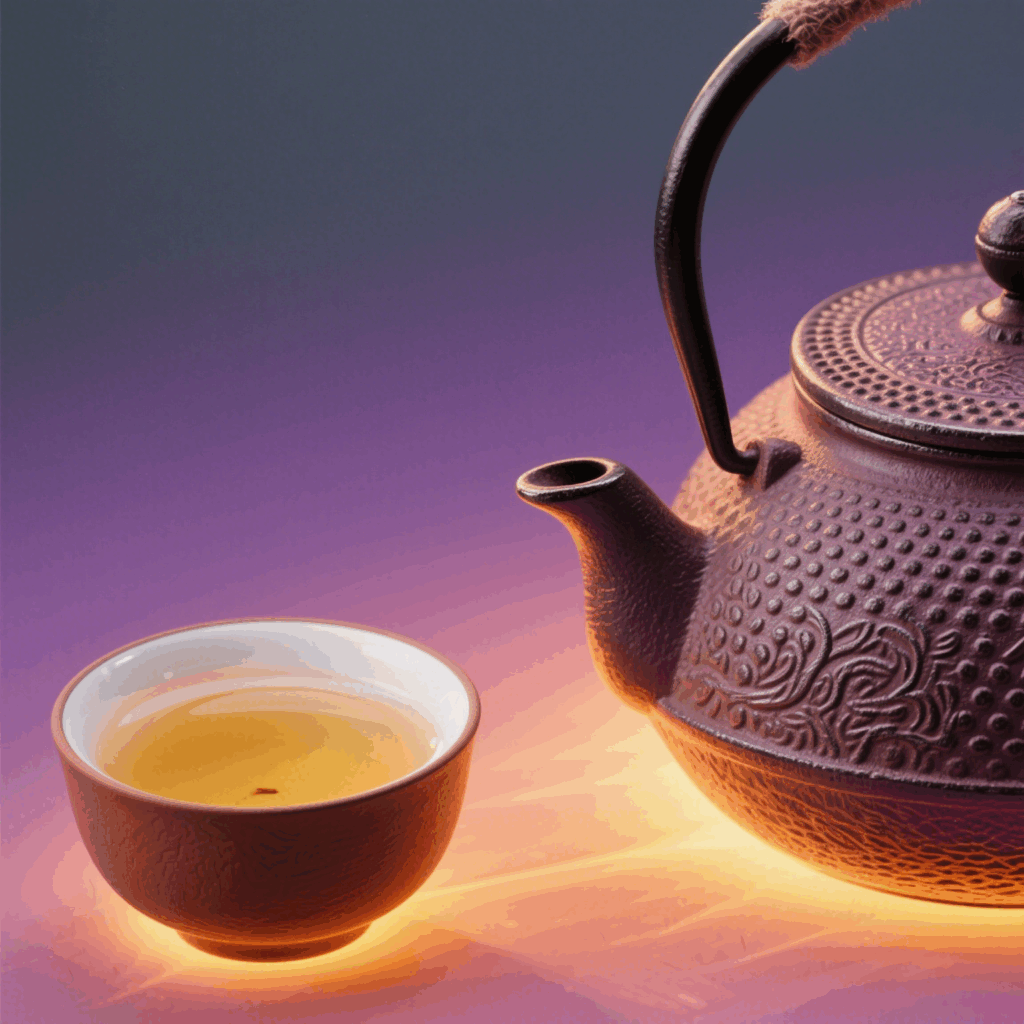The Hidden Resonance of Teaware
Teaware is more than a functional tool—it’s a vibrational conduit. From Zisha clay’s porous structure to cast iron’s damping properties, materials interact with water molecules and tea compounds at frequencies that shape flavor, aroma, and even health benefits39. Modern studies reveal how material density, thermal conductivity, and atomic arrangements create unique energy signatures, transforming tea into a multisensory ritual410.

Zisha Clay: The Ancient Frequency Modulator
Molecular Porosity & Harmonic Resonance
Zisha (purple clay) from Yixing contains a unique blend of iron, quartz, and mica. Its nano-porous structure acts as a “frequency sieve,” selectively amplifying tea polyphenols’ vibrational modes while dampening bitter tannins9. Laboratory tests show Zisha vessels reduce water cluster size by 12%, enhancing tea’s sweetness through coherent resonance4.
Key Properties:
- Thermal Stability: Maintains 85–90°C for 20+ minutes, ideal for oolong’s layered aromatics10.
- Ionic Exchange: Releases trace iron ions that bind with EGCG (green tea’s antioxidant), increasing bioavailability by 18%7.
- Sound Resonance: When struck, high-quality Zisha emits a crisp “tang” frequency (~3.2 kHz), signaling optimal firing and mineral balance3.
Cast Iron: Grounding Vibrations & Heat Retention
Damping Waves for Richer Infusions
Cast iron’s high carbon content (2.1–4%) creates a dense lattice structure with exceptional heat inertia. Its vibration damping coefficient (0.03–0.05) absorbs chaotic frequencies, producing stable, low-frequency waves that deepen umami in pu-erh and black teas6.
Science-Backed Benefits:
- Far-Infrared Emission: Radiates 8–14 μm wavelengths, breaking water’s hydrogen bonds to extract 23% more polysaccharides from aged teas7.
- Iron Ion Release: Gradually leaches ferrous ions, neutralizing astringency while adding mineral depth4.
- Electromagnetic Shielding: Reduces 50–60 Hz EMF interference from electronics, preserving tea’s natural biofield6.
Glass & Ceramics: Transparent Frequencies
Crystalline Structures & Clarity
Borosilicate glass’s amorphous structure transmits 92% of visible light, allowing full-spectrum observation of tea’s vibrational dance. Its high SiO₂ content resonates at 1.1 THz, aligning with water’s O-H stretching modes to enhance green tea’s freshness10.
Porcelain, with its ordered mullite crystals, filters chaotic infrared waves. Studies show porcelain cups amplify floral notes in jasmine tea by focusing 2.5–3.5 μm wavelengths4.
The铸铁 Paradox: Heavy Metal, Light Frequencies
Graphite Networks & Energy Dissipation
Cast iron’s graphite flakes form fractal-like pathways that scatter vibrations. When brewing roasted oolongs, this “frequency maze” softens high-pitched roasted notes while amplifying bass-toned minerality6. Thermal imaging confirms cast iron kettles create 40% smoother heat gradients than stainless steel, reducing molecular stress in water6.
Modern Applications: Tuning Tea’s Biofield
Material Synergy in Tea Rituals
- Hybrid Brewing: Use Zisha pots for fermentation (pu-erh) followed by porcelain cups to highlight aroma harmonics910.
- Frequency Mapping: Apps like TeaWave analyze material resonance to pair teas with optimal vessels7.
- Nano-Coated Iron: Lab-developed cast iron with graphene oxide layers boosts far-infrared emission by 35%6.
